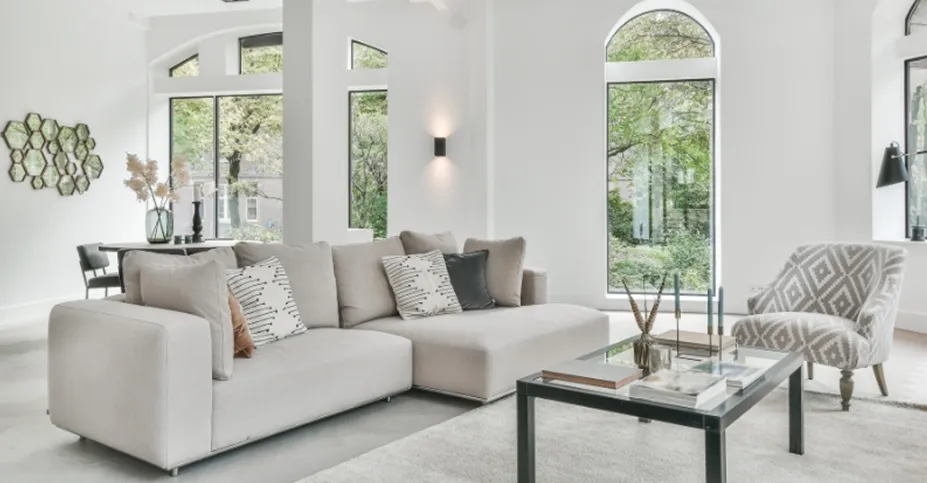8 Factors to Consider for a Room Addition
Considering a home addition? Find out the 8 factors you need to know for a smooth process and successful outcome. Make your project a success today!
Adding a room to your home is an exciting and transformative project that can significantly enhance your living space and increase your home’s value. Whether you’re expanding to accommodate a growing family, creating a home office, or designing your dream master suite, a well-planned room addition can provide the space and functionality you need. However, like any major home improvement project, a room addition requires careful planning and consideration. Here are eight essential factors to keep in mind to ensure your room addition is successful and stress-free.
1. Purpose of the Room Addition
Before diving into the logistics of a room addition, it’s essential to determine the purpose of the new space. Understanding why you need the additional room will guide many of the decisions you make throughout the process. Ask yourself:
- Do you need a new bedroom or a larger kitchen?
- Is this space intended for leisure, such as a sunroom or home theater?
- Will it be used as a functional area, like a home office or gym?
Clearly defining the purpose of the room will help you work with designers and contractors to create a space that meets your needs while blending seamlessly with your existing home. Additionally, having a clear goal will make it easier to allocate your budget appropriately and prioritize features that are most important for your project.
2. Budget and Financing
Setting a realistic budget is crucial for any home improvement project, and a room addition is no exception. The cost of a room addition can vary widely depending on the size, complexity, materials used, and location of your home. To avoid any financial surprises, it’s important to get detailed estimates from contractors and factor in potential additional costs, such as permits, inspections, and unexpected complications.
Consider how you’ll finance the project. Will you use savings, take out a home equity loan, or explore other financing options? Having a clear financial plan in place before starting the project will help you stay on track and avoid cutting corners that could compromise the quality of the addition.
3. Zoning Laws and Permits
Before breaking ground on your room addition, it’s essential to understand your local zoning laws and building codes. Zoning laws dictate how your property can be used and developed, while building codes ensure that construction meets safety standards. Violating these regulations can result in fines, delays, or even having to tear down your new addition.
Consult with your contractor or a local zoning official to ensure your project complies with all relevant laws. You’ll likely need to obtain permits for the construction, and these permits may require specific documentation, such as architectural plans or engineering reports. Keep in mind that permit approval can take time, so factor this into your project timeline.
4. Design and Aesthetics
A well-designed room addition should blend seamlessly with the existing architecture and style of your home. Whether you have a modern, traditional, or eclectic design, it’s important that the new space feels like a natural extension of your current living space.
Consider hiring a professional architect or designer to help with the design process. They can ensure that the room addition is not only functional but also aesthetically pleasing. This includes choosing materials, colors, and finishes that complement the rest of your home. For example, if you have a craftsman-style home, you’ll want to use similar trim work and materials in the new room to maintain visual harmony.
5. Impact on Your Home’s Layout
Adding a new room to your home can significantly impact the flow and layout of your living space. It’s important to consider how the room addition will affect the rest of your home and ensure that the new layout works for your family’s needs.
For example, adding a room to the back of your house might block access to your backyard, or a second-story addition could impact the natural light in your existing rooms. Think about how the new space will be integrated into your home’s layout and whether any additional modifications, such as widening hallways or reconfiguring doorways, will be necessary to accommodate the addition.
6. Energy Efficiency
With energy costs on the rise and increasing awareness of environmental impact, it’s important to consider the energy efficiency of your room addition. Making energy-efficient choices during construction can help reduce your home’s overall energy consumption and lower your utility bills in the long run.
Consider incorporating energy-efficient windows, insulation, and HVAC systems into your room addition. Additionally, think about the orientation of the new space and how it can take advantage of natural light to reduce the need for artificial lighting during the day. If possible, explore the possibility of integrating renewable energy sources, such as solar panels, into your design.
7. Resale Value
While a room addition can make your home more comfortable and functional, it’s important to consider how the addition will affect your home’s resale value. Not all home improvements yield the same return on investment, so it’s worth thinking about how your addition will appeal to future buyers.
Generally, adding functional spaces like extra bedrooms, bathrooms, or living areas tends to boost home value. However, the quality of construction and design also plays a significant role. A poorly executed room addition can detract from your home’s value, so it’s crucial to hire experienced professionals and use high-quality materials.
Additionally, research your local real estate market to see what types of room additions are most desirable in your area. For example, if you live in a family-oriented neighborhood, adding an extra bedroom or playroom may be more attractive to buyers than a home gym or office.
8. Choosing the Right Contractor
Choosing the right contractor is perhaps the most critical factor in ensuring the success of your room addition. A skilled and experienced contractor will not only execute the construction efficiently but also guide you through the entire process, from design to completion.
When selecting a contractor, look for one with a proven track record of successful room additions, preferably with experience in your local area. Check references, read reviews, and ask to see examples of their previous work. Communication is key, so choose a contractor who listens to your needs, provides clear explanations, and keeps you informed throughout the project.
If you’re in San Diego, working with a reputable contractor like Paragon Builders can make all the difference. With over a decade of experience in residential renovations and a strong portfolio of successful projects, they have the expertise to deliver high-quality room additions tailored to your needs. To learn more about how to prepare for your room addition and make your dream space a reality, check out helpful tips on preparing for your room addition.
Conclusion
A room addition is a significant investment that requires careful planning and consideration. By keeping these eight factors in mind, you can ensure that your project runs smoothly and delivers the results you’re looking for. From defining the purpose of the space to choosing the right contractor, every decision you make will impact the success of your room addition. Take the time to plan thoughtfully, and you’ll create a beautiful and functional new space that enhances your home and your lifestyle.






